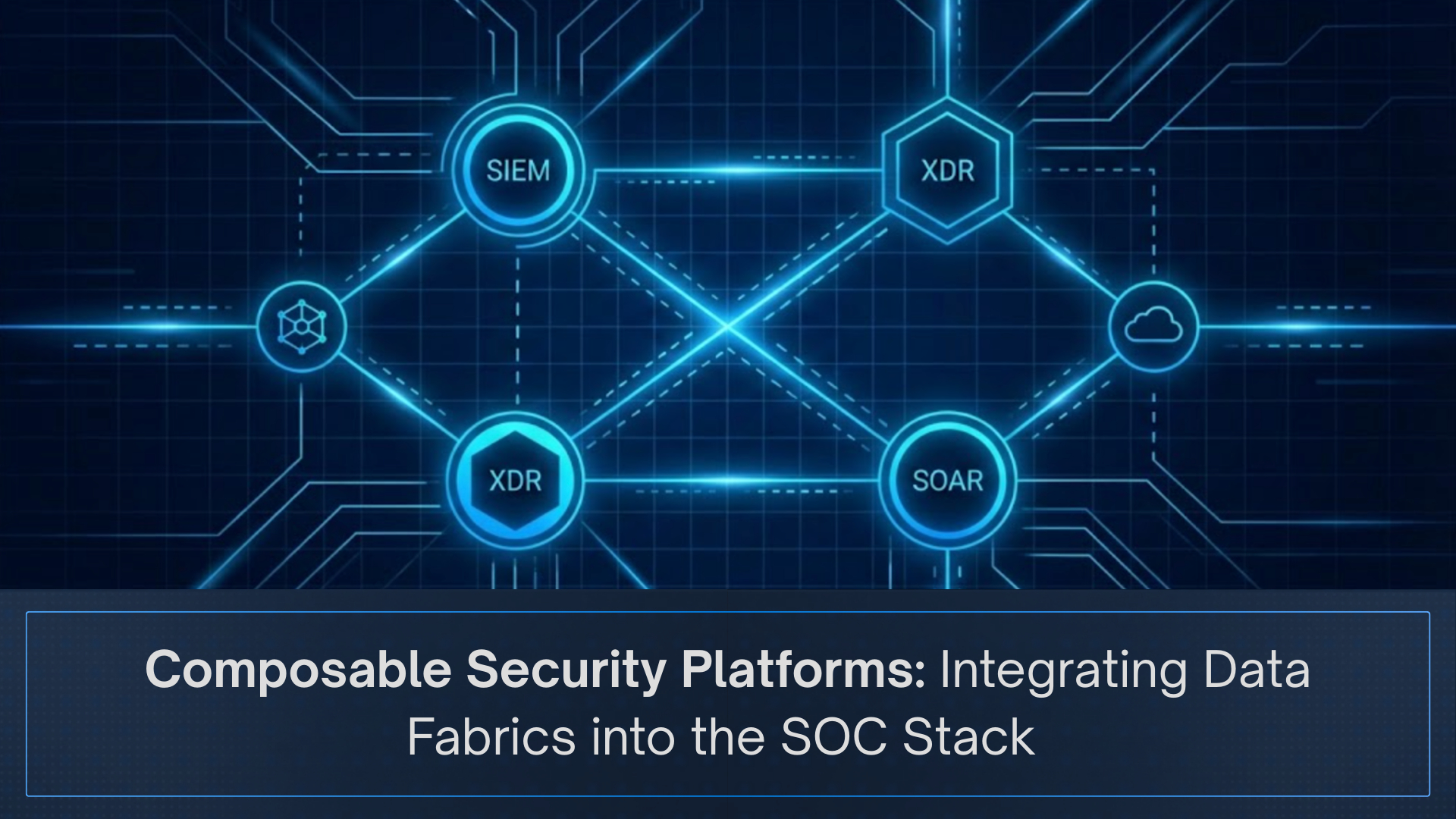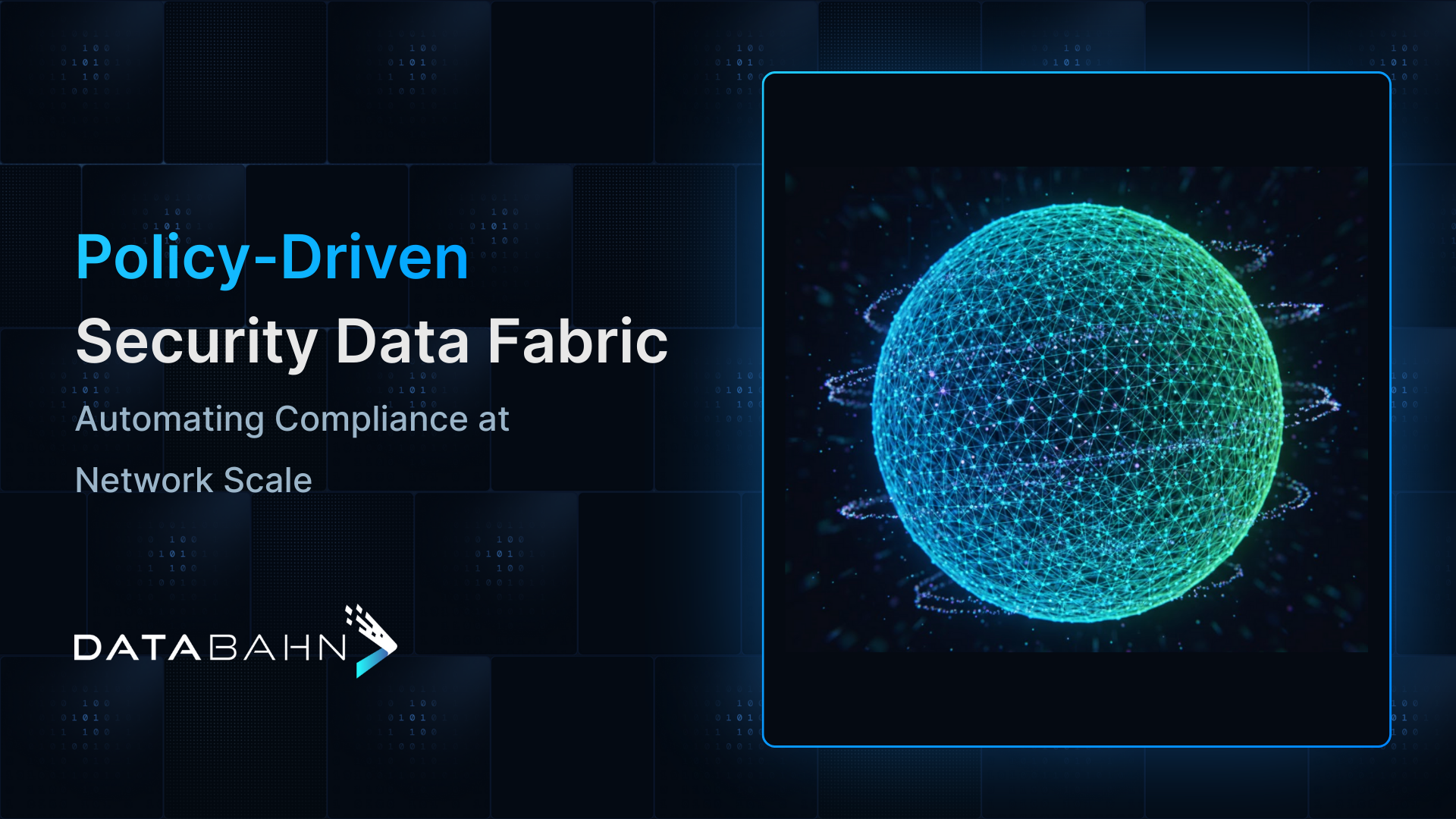Security teams have long relied on an endless array of SIEM and business intelligence (BI) dashboards to monitor threats. Yet for many CISOs and SOC leads, the promise of “more dashboards = more visibility” has broken down. Analysts hop between dozens of charts and log views trying to connect the dots, but critical signals still slip past. Enterprises ingest petabytes of logs, alerts, and telemetry, yet typically analyze less than 5% of it, meaning the vast majority of data (and potential clues) goes untouched.
The outcome? Valuable answers get buried in billions of events, and teams waste hours hunting for insights that should be seconds away. In fact, one study found that as much as 25% of a security analyst’s time is spent chasing false positives (essentially investigating noisy, bogus alerts). Security teams don’t need more dashboards – they need security insights.
The core issue is context.
Traditional dashboards are static and siloed; each tells only part of the story. One dashboard might display network alerts, another shows user activity, and another displays cloud logs. It’s on the human analyst to mentally fuse these streams, which just doesn’t scale. Data is scattered across tools and formats, creating fragmented information that inflates costs and slows down decision-making. (In fact, the average enterprise juggles 83 different security tools from 29 vendors, leading to enormous complexity.) Meanwhile, threats are getting faster and more automated – for example, attackers have reduced the average time to complete a ransomware attack in recent years far outpacing a human-only defense. Every minute spent swiveling between dashboards is a minute an adversary gains in your environment.
Dashboards still provide valuable visibility, but they were never designed to diagnose problems. It isn’t about replacing dashboards, it’s about filling the critical gap by surfacing context, spotting anomalies, and fetching the right data when deeper investigation is needed.
To keep pace, security operations must evolve from dashboard dependency to automated insight. That’s precisely the shift driving Databahn’s Reef.
The Solution: Real-Time, Contextual Security Insights with Reef
Reef is Databahn’s AI-powered insight layer that transforms high-volume telemetry into actionable intelligence the moment it needs. Instead of forcing analysts to query multiple consoles, Reef delivers conversational, generative, and context-aware insights through a simple natural language interface.
In practice, a security analyst or CISO can simply ask a question or describe a problem in plain language and receive a direct, enriched answer drawn from all their logs and alerts. No more combing through SQL or waiting for a SIEM query to finish – what used to take 15–60 minutes now takes seconds.
Reef does not replace static dashboards. Instead, it complements them by acting as a proactive insight layer across enterprise security data. Dashboards show what’s happening; Reef explains why it’s happening, highlights what looks unusual, and automatically pulls the right context from multiple data sources.
Unlike passive data lakes or “swamps” where logs sit idle, Reef is where the signal lives. It continuously filters billions of events to surface clear insights in real time. Crucially, Reef’s answers are context-aware and enriched. Ask about a suspicious login, and you won’t just get a timestamp — you’ll get the user’s details, the host’s risk profile, recent related alerts, and even recommended next steps. This is possible because Reef feeds unified, cross-domain data into a Generative AI engine that has been trained to recognize patterns and correlations that an analyst might miss. The days of pivoting through 6–7 different tools to investigate an incident are over; Reef auto-connects the dots that humans used to stitch together manually.
Under the Hood: Model Context Protocol and Cruz AI
Two innovations power Reef’s intelligence: Model Context Protocol (MCP) and Cruz AI.
- MCP keeps the AI grounded. It dynamically injects enterprise-specific context into the reasoning process, ensuring responses are factual, relevant, and real-time – not generic guesses. MCP acts as middleware between your data fabric and the GenAI model.
- Cruz AI is Reef’s autonomous agent – a tireless virtual security data engineer. When prompted, Cruz fetches logs, parses configurations, and automatically triages anomalies. What once required hours of analyst effort now happens in seconds.
Together, MCP and Cruz empower Reef to move beyond alerts. Reef not only tells you what happened but also why and what to do next. Analysts effectively gain a 24/7 AI copilot that instantly connects dots across terabytes of data.
Why It Matters
Positioning Reef as a replacement for dashboards is misleading — dashboards still have a role. The real shift is that analysts no longer need to rely on dashboards to detect when something is wrong. Reef shortens that entire cycle by proactively surfacing anomalies, context, and historical patterns, then fetching deeper details automatically.
- Blazing-Fast Time to Insight: Speed is everything during a security incident. By eliminating slow queries and manual cross-referencing, Reef delivers answers up to 120× faster than traditional methods. Searches that once took an analyst 15–60 minutes now resolve in seconds.
- Reduced Analyst Workload: Reef lightens the load on your human talent by automating the grunt work. It can cut 99% of the querying and analysis time required for investigations. Instead of combing through raw logs or maintaining brittle SIEM dashboards, analysts get high-fidelity answers handed to them instantly. This frees them to focus on higher-value activities and helps prevent burnout.
- Accelerated Threat Detection: By correlating signals across formerly isolated sources, Reef spots complex attack patterns that siloed dashboards would likely miss. Behavioral anomalies that span network, endpoint, and cloud layers can be baselined and identified in tandem. The outcome is significantly faster threat detection – Databahn estimates up to 3× faster – through cross-domain pattern analysis.
- Unified “Single Source of Truth”: Reef provides a single understanding layer for security data, ending the fragmentation and context gaps. All your logs and alerts – from on-premise systems to multiple clouds – are normalized into one contextual view. This unified context closes investigation gaps; there’s far less chance a critical clue will sit forgotten in some corner of a dashboard that nobody checked. Analysts no longer need to merge data from disparate tools or consoles mentally; Reef’s insight feed already presents the whole picture.
- Clear Root Cause & Lower MTTR: Because Reef delivers answers with rich context, understanding the root cause of an incident becomes much easier. Whether it’s pinpointing the exact compromised account or identifying which misconfiguration allowed an attacker in, the insight layer lays out the chain of events clearly. Teams can accelerate root-cause analysis with instant access to all log history and the relevant context surrounding an event. This leads to a significantly reduced Mean Time to Response (MTTR). When you can identify, confirm, and act on the cause of an incident in minutes instead of days, you not only resolve issues faster but also limit the damage.
The Bigger Picture
An insight-driven SOC is more than just faster – it’s smarter.
- For CISOs: Better risk outcomes and higher ROI on data investments.
- For SOC managers: Relief from constant firefighting and alert fatigue.
- For front-line engineers: Freedom from repetitive querying, with more time for creative problem-solving.
In an industry battling tool sprawl, analyst attrition, and escalating threats, Reef offers a way forward: automation that delivers clarity instead of clutter.
The era of being “data rich but insight poor” is ending. Dashboards will always play a role in visibility, but they cannot keep pace with AI-driven attackers. Reef ensures analysts no longer depend on dashboards to detect anomalies — it delivers context, correlation, and investigation-ready insights automatically.
Databahn’s Reef represents this next chapter – an insight layer that turns mountains of telemetry into clear, contextual intelligence in real time. By fusing big data with GenAI-driven context, Reef enables security teams to move from reactive monitoring to proactive decision-making.
From dashboards to decisions: it’s more than a slogan; it’s the new reality for high-performing security organizations. Those who embrace it will cut response times, close investigation gaps, and strengthen their posture. Those who don’t will remain stuck in dashboard fatigue.
See Reef in Action:
Ready to transform your security team operations? Schedule a demo to watch conversational analytics and automated insights tackle real-world data.



.png)











.avif)

.avif)








